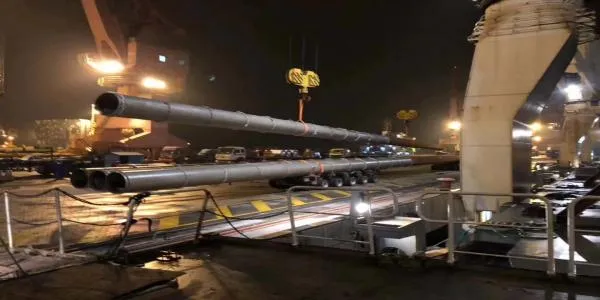During the construction process of steel pipe piles, it is inevitable to encounter the problem of pipe pile damage. So what is the cause of pipe damage? To be fair, the main problem of pipe pile damage during construction lies in the construction. On a 30-70 scale, 30% is due to pipe pile quality issues and 70% is due to construction issues. If the production and construction of steel pipe piles strictly follows the ASTM A252 standards and specifications, the damage rate of steel pipe piles can be reduced to a few ten thousandths, but it cannot be zero. Because this has something to do with survey and design. If the data provided in the geological survey report is inaccurate, or the pile type selection and bearing layer selection by the design unit are incorrect, it will lead to quality problems such as pipe pile damage or insufficient bearing capacity. Therefore, it is very important to choose methods and specifications during construction. Their importance affects the progress of the project. This article will introduce the following construction methods for reference only.

Hammering method:
At present, the most commonly used method of construction is the "hammering method" (mainly diesel hammer): the diesel hammer was first developed by the West German company DELMAG in 1938 and was soon promoted and used around the world. With more than 60 years of experience, the hammer type has changed from 0.5 to 0.5 T-12T, the equipment is very mature.
The advantages are: flexible construction, easy entry and exit, fast construction speed, easy operation, and good ground penetration.
Disadvantages are: noise and oil fume cause environmental pollution, improper operation can easily cause pile heads to be broken and cracked, and construction quality is greatly affected by the technical level of the construction personnel.
Static pile pressing method:
Advantages: The pile bearing capacity is visible and controllable during construction. The pile pressing force and the oil pressure are directly proportional. The pressure value displayed by the oil pressure gauge represents the pile pressing force during pile pressing.
Disadvantages: The static pressure pile driver is a "monster", it is not easy to enter and leave the site, and the cost is high. It is heavy in weight and has high requirements on the construction site. Party A has high costs for backfilling the site. The effect of squeezing soil is obvious, which can easily trap the machine and affect the construction progress. Squeeze the adjacent constructed piles.
Bored cast-in-place pile method:
Also known as cast-in-place piles, cast-in-place pile foundations or cast-in-place pile foundations. It is mainly used to reinforce and support the foundation of buildings or other engineering structures, with good load-bearing capacity and stability. Bored cast-in-place piles are a commonly used foundation support engineering method. They have the advantages of strong bearing capacity, good stability, and wide adaptability, but they also face challenges such as higher costs and high soil requirements.
Vibration pile driving method:
Vibration piling is a common foundation treatment method, also known as vibration piling method or vibration piling method. It applies vibration force to the pile body through vibration mechanical equipment, causing the pile body to gradually sink into the ground, thereby strengthening and supporting the foundation of buildings or other engineering structures. Vibration pile driving is suitable for soft soil areas, which can strengthen and improve the soil and improve the bearing capacity of the foundation. Since there is no need to excavate earth during the vibration pile driving process, it can be used in areas with high water levels and humid areas. Vibration piling construction is fast and can also be applied to projects that require rapid construction.
Bored cast-in-place pile plus vibrating pile sinking:
Bored cast-in-place piles plus vibrating pile sinking is a comprehensive construction technology that combines two foundation treatment methods: bored cast-in-place piles and vibrating pile sinking. In this method, the construction steps of bored piles are first carried out, including drilling, cleaning, grouting and reinforcement to form a concrete pile body. Then, when the pile body has been fixed, vibration mechanical equipment is used to vibrate the pile body to make it sink further into the ground. The vibration force can help the pile body pass through the harder soil layer, improving the pile body's bearing capacity and stability. The construction process of bored piles and vibration pile sinking is relatively complex and requires professional construction equipment and technical support. The construction is difficult and may also increase costs.
In addition to the above-mentioned methods, there are also "intermediate excavation method", "pile planting method", "water flushing pile sinking method", etc. However, compared with the static pile pressing method, the hammering method is rarely used and is generally used in certain fields. For projects with special requirements, the cost of using these methods is usually high and the construction cost is high. However, it can reduce the soil squeezing effect and overcome sinking difficulties in special formations.






 English
English Español
Español بالعربية
بالعربية











 Phone :
Phone :  Whatsapp :
Whatsapp :  Email :
Email : 


